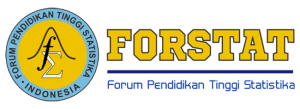Geographically Weighted Lasso Method in Modeling the Gross Regional Domestic Product of the Bali-Nusra Region
DOI:
https://doi.org/10.34123/jurnalasks.v16i1.576Keywords:
GRDP, GWL, GWR, Multicollinearity, Spatial HeterogeneityAbstract
Indonesia's Central Bureau of Statistics announced that economic growth in 2020 is still in the negative zone, and the group of provinces in the Bali-Nusra region has the most negligible impact on economic growth. The value of Gross Regional Domestic Product (GRDP) measures Indonesia's economic growth. GRDP is the total added value all regional business units generate at a particular time. This research aims to apply and interpret the results of the Geographically Weighted Lasso (GWL) method for GRDP in the Bali-Nusra region. The GWL method further develops the Geographically Weighted Regression (GWR) approach by adding the Least Absolute Shrinkage and Selection Operator (LASSO) method. The GWL method simultaneously selects insignificant variables by reducing the value of the regression coefficient to zero using the LASSO method. The data used has the effect of spatial heterogeneity and multicollinearity, a prerequisite for modeling with the GWL method. Based on the analysis conducted, there are 41 different GRDP models for each district/city in the Bali-Nusra region. The resulting GWL model provides a coefficient of determination of 95.84 % so that the resulting model can be used and is considered valid.
Downloads
References
Agustina, M. F., Wasono, R., and Darsyah, M. Y. 2015. Pemodelan Geographically Weighted Regression (GWR) pada Tingkat Kemiskinan di Provinsi Jawa Tengah (translate: Geographically Weighted Regression (GWR) Modeling at the Poverty Level in Central Java Province). Statistika, 3(2):67–74.
Central Bureau of Statistics (CBS), “Badan Pusat Statistik”, https://bps.go.id/ (Accessed in 2022).
Desriwendi, D., Hoyyi, A., and Wuryandari, T. 2015. Pemodelan Geographically Weighted Logistic Regression (GWLR) dengan Fungsi Pembobot Fixed Gaussian Kernel dan Adaptive Gaussian Kernel; Studi Kasus : Laju Pertumbuhan Penduduk Provinsi Jawa Tengah (translate: Geographically Weighted Logistic Regression (GWLR) Modeling with Weighted Functions of Fixed Gaussian Kernel and Adaptive Gaussian Kernel; Case Study: Population Growth Rate of Central Java Province), Jurnal Gaussian, 4(2):193-204.
Fotheringham, A. S., Brunsdon, C, and Charlton, M. 2002. Geographically Weighted Regression: The Analysis of Spatially Varying Relationships. West Sussex: John Wiley & Sons.
Justitiaski, B. U., Fitriyani, N., and Bahri, S. 2022. Modeling the Number of Infant Mortality in East Lombok using Geographically Weighted Poisson Regression. Eigen Mathematics Journal, 5(2):100-108.
Kasyfurrahman, M. L. 2020. Application of the Geographically Weighted Lasso Method in the Case of the Gross Regional Domestic Product of West Java. Dissertation. Indonesian University of Education.
Kurniawan, R and Yuniarto, B. 2016. Analisis Regresi Dasar dan Penerapannya dengan R. Jakarta: PT. Karisma Putra Utama.
Lu, B., Charlton, M., Harris, P., and Fotheringham, A. S. 2014. Geographically Weighted Regression with A Non-Euclidean Distance Metric: A Case Study using Hedonic House Price Data. International Journal of Geographical Information Science, 28(4):660-681.
Munikah, T., Pramoedyo, H., and Fitriani, R. 2014. Geographically Weighted Regression Modeling with Fixed Gaussian Kernel Weighted on Spatial Data (Case Study of Food Security in Tanah Laut District of South Kalimantan), NATURAL B, 2(3):296-302.
Nadya, M. Rahayu, W., and Santi, V. M. 2017. Analisis Geographically Weighted Regression (GWR) pada Kasus Pneumonia Balita di Provinsi Jawa Barat (translate: Geographically Weighted Regression (GWR) Analysis in Toddler Pneumonia Cases in West Java Province). Jurnal Statistika dan Aplikasinya, 1(1):23-32.
Pamungkas, R. A., Yasin, H.. and Rahmawati, R. 2016. Perbandingan Model GWR dengan Fixed dan Adaptive Bandwidth untuk Persentase Penduduk Miskin di Jawa Tengah (translate: Comparison of the GWR Model with Fixed and Adaptive Bandwidth for the Percentage of Poor People in Central Java), Jurnal Gaussian, 5(3):535-544.
Prajanati, M. S. A., Harsyiah, L., and Fitriyani, N. 2022. Model of Human Development Index in West Nusa Tenggara Province using Geographically Weighted Ridge Regression Method (GWRR). The 3rd International Conference on Natural Sciences, Mathematics, Applications, Research, and Technology. Bali, Indonesia.
Ramadhan, A. Z., Pramoedyo, H., and Fitriani R. 2013. Perbedaan Metode Geographically Weighted Lasso (GWL)-Lokal dan Geographically Weighted Lasso (GWL) Global dalam Mengatasi Kasus Multikolinieritas pada Model Geographically Weighted Regression (GWR) (translate: Differences in Geographically Weighted Lasso (GWL)-Local and Global Geographically Weighted Lasso (GWL) Methods in Overcoming Multicollinearity Cases in Geographically Weighted Regression (GWR) Models), Jurnal Mahasiswa Statistik, 1(2):93-96.
Setiyorini, A., Suprijadi, J., and Handoko, B. 2017. Implementations of Geographically Weighted Lasso in Spatial Data with Multicollinearity (Case Study: Poverty Modeling of Java Island). AIP Conference Proceedings, AIP Publishing LLC, 1827(1):020003.
Sumarni, I. D., Fitriyani, N., and Baskara, Z. W. 2022. Modeling of Factors Affecting Poverty in West Nusa Tenggara Province in 2020 With Geographically Weighted Logistic Regression. Mathematics National Conference (Konferensi Nasional Matematika) XXI. Mataram, Indonesia.
Widarjono, A. 2005. Ekonometrika Teori dan Aplikasinya (translate: Econometrics Theory and Its Applications). Yogjakarta: Ekonisia.
















